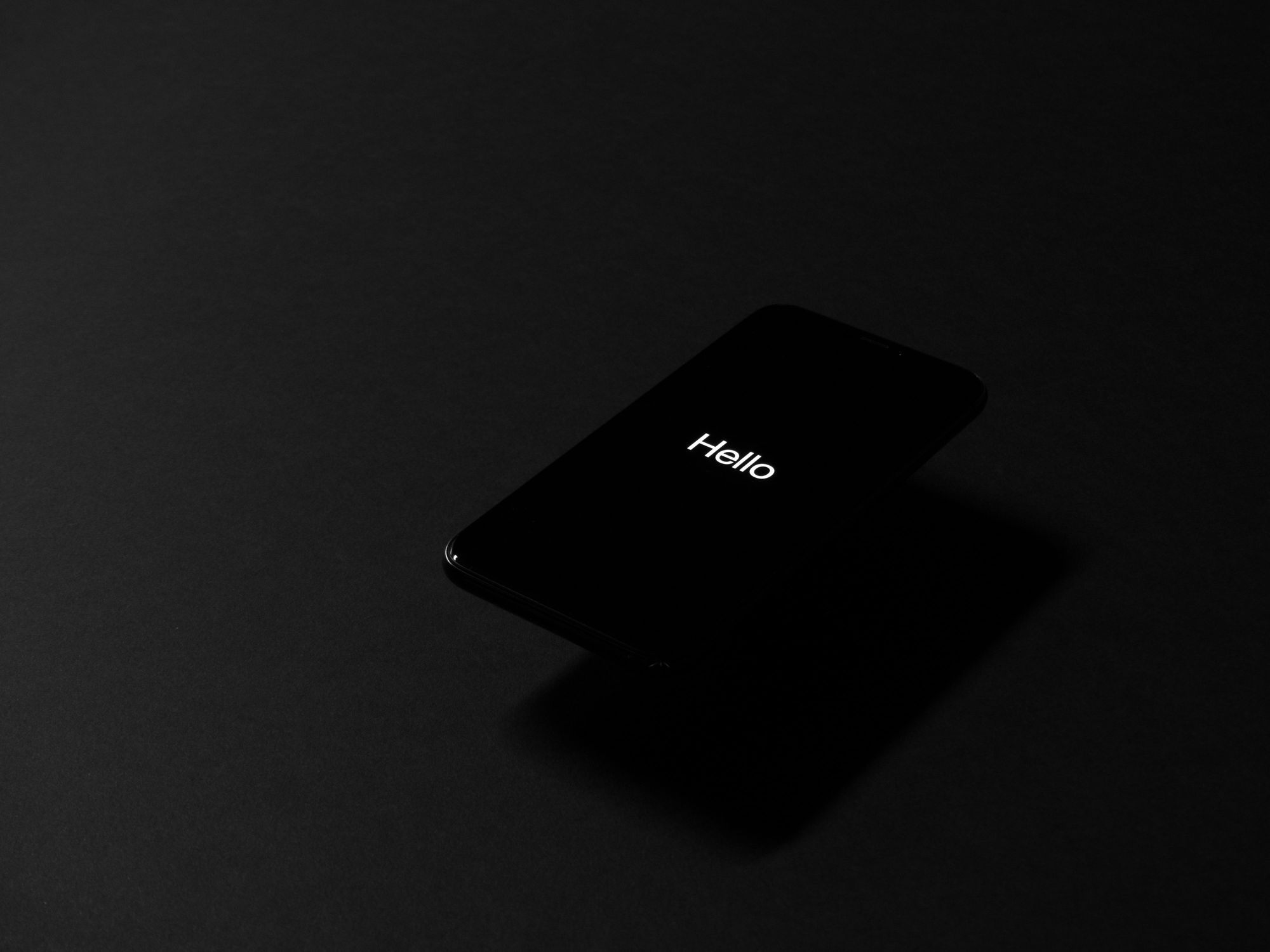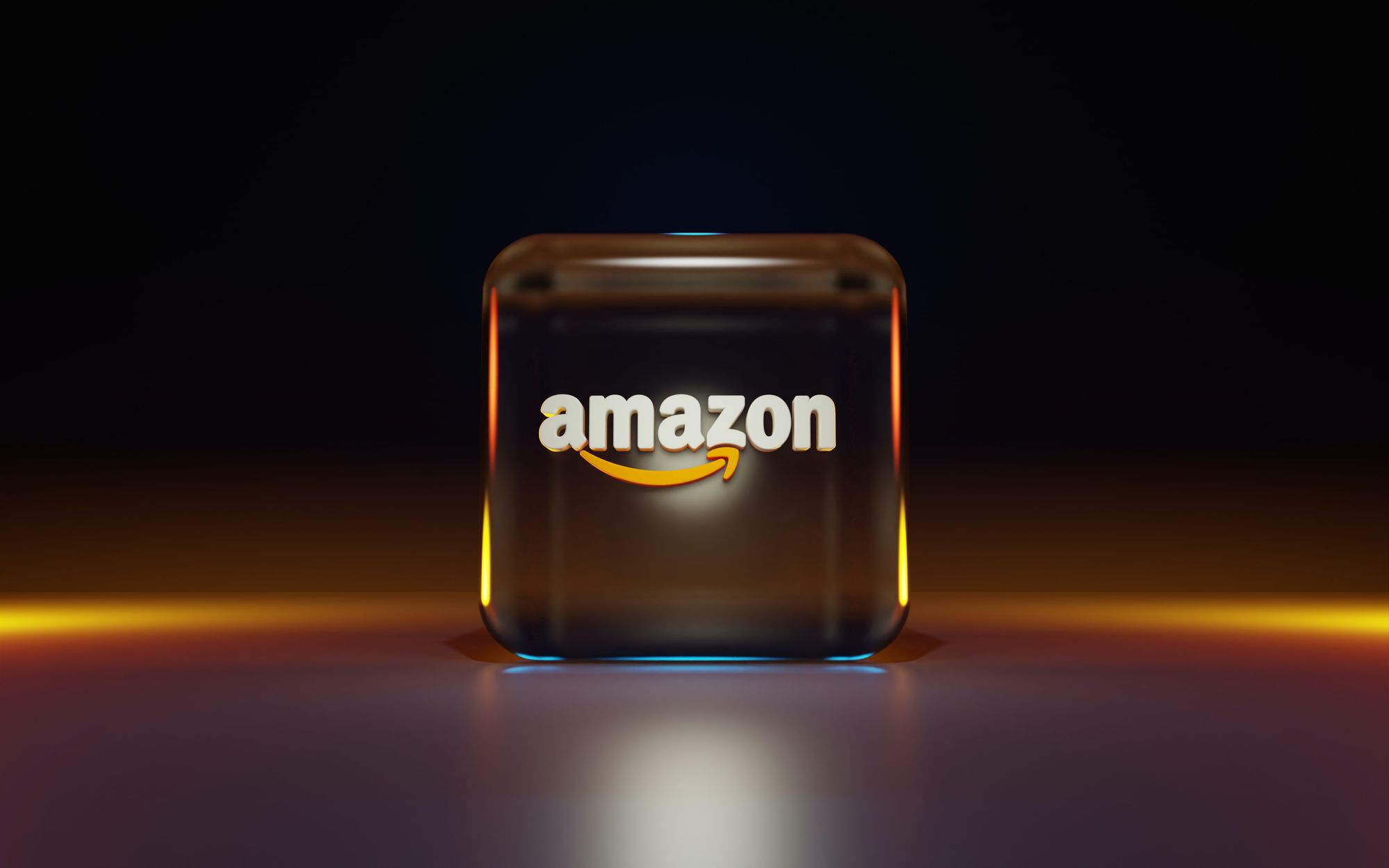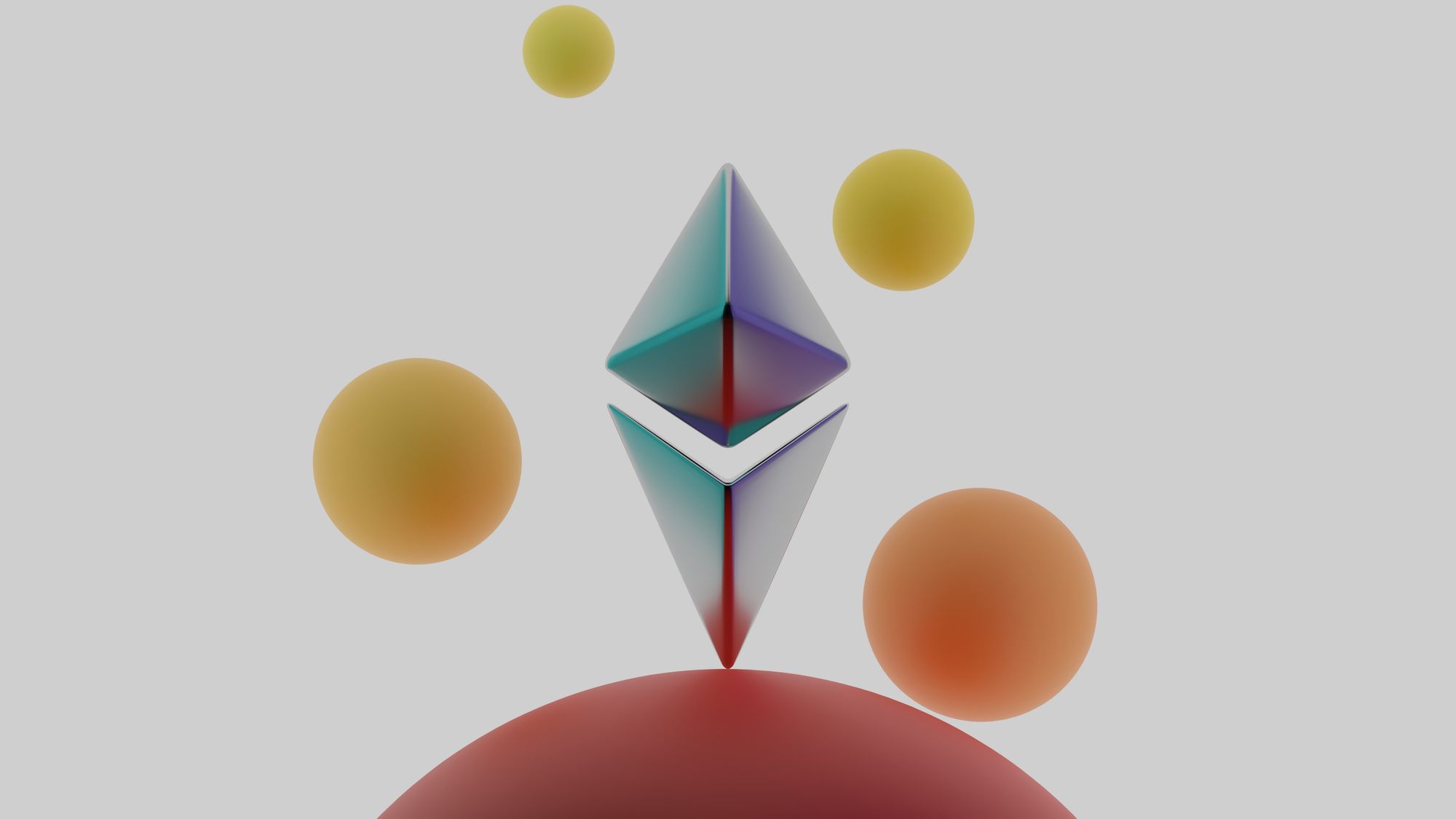The Big Tech and Blockchain

In the coming years, blockchain will continue to penetrate the information technology industry—shifting, refining, and forwarding it in ways currently unimaginable. Those dominating the information technology sector, the Big Five, are also looking to seize blockchain opportunities.
These giants are identified as the Big Five or MAMAA (formerly FAANG)—Meta, Amazon, Microsoft, Apple, and Alphabet. And, this article spotlights the big tech's links to blockchain.
What's Inside
Meta
Like most big tech firms, Meta realizes the profound impact blockchain will soon have, especially as more of the technology's use cases to solve business problems develop.
Meta plans to generate a deeper compatibility with blockchain as trends continue to rise. In the past, they’ve dipped into cryptocurrency and attempted to create Diem, a cryptocurrency exclusive to Facebook and WhatsApp users globally. That failed; Meta faced regulatory scrutiny at the time—so much so that David Marcus, head of the crypto project, felt inclined to leave the company. Currently in the works is Meta’s creation of a digital currency, Zuck Bucks. However, the company has decided to subtract Zuck Bucks from the prospect of being blockchain-based, as it’s unlikely Meta will transform the digital currency into a cryptocurrency.
As evident, companies looking to dive into the realm of cryptocurrency may struggle to stay afloat in regulatory waters. Other significant leaders in the tech industry must consider regulatory feasibility before delving into crypto-related strategies.

When it comes to digital assets, Meta’s projected release for an NFT-sharing feature is colorful. Meta’s Instagram is introducing digital collectibles to showcase NFT’s. Users will be able to connect digital wallets and “cross-post digital collectibles that they own across both Facebook and Instagram” with zero fees—thanks to Ethereum, Polygon, and soon-to-be-incorporated Flow and Solana blockchains.
“As of today, we support connections with third-party wallets including Rainbow, MetaMask, Trust Wallet, Coinbase Wallet and Dapper Wallet coming soon. Supported blockchains at this time include Ethereum, Polygon and Flow.”—Meta
Their NFT-sharing space is ultimately geared toward creators who can create, showcase, and sell digital collectibles to fans. Although a work-in-progress, Meta’s launch of digital collectibles has the potential to jumpstart entire businesses—an entire new community—in the gig economy.
Meta and Blockchain Over the Years
- 2018 | Meta (at the time Facebook) instated David Marcus, prior PayPal president and prominent executive who previously headed Messenger, in a state of authority for their newly formed blockchain group that would “explore how to best leverage blockchain across Facebook, starting from scratch” (Investopedia).
- ——
- 2019 | Facebook recruited backers to fund their Diem (then Libra) cryptocurrency system, and the company was seeking as much as $1 billion for efforts behind the coin’s creation.
- ——
- 2020 | Facebook continued to pour research into their cryptocurrency and the Diem project with a research team within Novi that had focused on addressing blockchain’s limitations.
- ——
- 2021 | Andrew Bosworth, Meta’s eventual CTO, asserted a vision for the company to adopt and work with blockchain or cryptocurrency technologies. Marc Andreessen, one of Meta’s board members who helps lead venture capital firm Andreessen Horowitz, created dedicated funds to invest in web3 companies and technologies as well.
- ——
- 2022 | Meta introduces digital collectibles and an exciting NFT-sharing platform on the way. Meta is also reportedly planning to introduce a virtual currency to their apps, dubbed “Zuck Bucks.”

Amazon
Blockchain poses a threat to big tech firms; users envision a world of blockchain where they have full ownership of personal data. Such a reality is a long way off, yet Amazon attacks the Blockchain-as-a-Service (BaaS) market to stay engaged with the technology. It’s a strategy to circumvent potential threats of becoming washed out by blockchain’s decentralized nature, and it’s a strategy that's been working.
Amazon’s subsidiary, Amazon Web Services (AWS), released Amazon Managed Blockchain (AMB): a service that “makes it easy to join public networks or create and manage scalable private networks using the popular open-source frameworks Hyperledger Fabric and Ethereum.” It offers a solution to the difficulties associated with self-managing blockchain networks.

And, AWS’s Blockchain Templates allowed clients to access a variety of blockchain frameworks for quick, convenient blockchain network deployment. Leading up to its discontinuation in 2019, it had been successful for a broad range of companies, amongst them Nestlé, Accenture, and AT&T Business.
Amazon’s Quantum Ledger Database (QLDB) does not run on blockchain, but draws ideas from blockchain’s distributed ledger technology; it’s a form of disruptive innovation that probes blockchain’s solidified and foolproof nature. In a nutshell, QLDB is a centralized database that tracks inserts but does not permit changes or deletes to the database; those with access to the database can “traverse the entire transaction history, [therefore] you have verifiability” (forbes.com). It’s especially useful for niche clients who want databases that are immutable and verifiable, but do not require a full blockchain.

“Amazon QLDB, in no surprise whatsoever, runs on AWS, so it is easily scalable and accessible to people in the cloud environment. It’s an intriguing entrant into the model database market, bringing ideas from blockchain’s distributed ledgers into the centralized world”—Forbes
Amazon and Blockchain Over the Years
- 2018 | Amazon launched AWS Blockchain Templates, and it was integral to their plan of offering Blockchain-as-a-Service (BaaS).
- ——
- 2019 | Amazon’s products, Amazon Managed Blockchain (AMB) and Amazon Quantum Ledger Database, were very early and still in preview. Meanwhile, AWS Blockchain Templates was discontinued.
- ——
- 2020 | AMB supported Ethereum in preview and customers were now able to “provision Ethereum nodes in minutes, and connect to the public Ethereum main network and test network.”
- ——
- 2021 | Updates are made to AMB and Amazon announced general availability with Ethereum: “in addition to DeFi applications, customers building analytical products such as smart contract monitoring tools and fraud detection software can also benefit from this scalable, highly available, and fully managed Ethereum service.”
- ——
- 2022 | AMB opens Hyperledger Fabric to the AWS Govcloud (US-West) Region.

Microsoft
Microsoft initially launched Azure Blockchain Service, a service that allowed clients to “create smarter and more efficient supply chains, reduce fraud, verify transactions faster, and create disruptive new business models.” However, the model saw waning interest and ultimately forced the company to adapt and act on recent changes in the blockchain industry; Azure was retired.
As an alternative, Microsoft partnered with popular blockchain software technology company ConsenSys to make ends meet with the growing needs of customers. Users rushed to migrate their existing ledger data from Azure onto Quorum Blockchain Service (owned by ConsenSys).

Time after time, blockchain has proven useful with security. Microsoft leverages the Ethereum blockchain to combat digital piracy and protect intellectual property with Argus: a system that runs on blockchain and allows digital piracy informers to anonymously report instances of piracy for the good of the public. With the system, Microsoft may “backtrack the source of the pirated content.” The company has even been able to decrease costs for piracy reporting by optimizing their cryptographic operations.
Drawn to the rush of decentralizing data, Microsoft rode the trend and led a $20 million funding round for a Web3 startup, Space and Time. It’s a startup working to extend the capabilities of smart contracts to power the trustless web. It also addresses a few of the limitations of smart contracts. Blockchain developers can “build multi-chain decentralized applications (dApps)...[and] decentralized data storage can provide users with better size and scale because smart contracts are limited by their lack of storage and complexity” (investopedia.com).

Microsoft and Blockchain Over the Years
- 2018 | Microsoft inked a deal with Israel’s largest bank to develop a blockchain-based digital bank guarantees platform (Investopedia). The deal between Microsoft and Bank Hapoalim signified the first time a country’s financial institution began using blockchain for financial contracts. It’s also the year Microsoft teamed up with firm EY to offer a blockchain service for game developers.
- ——
- 2019 | Research is conducted on decentralized and collaborative AI on blockchain. A nine-page paper proposes the use of blockchain in making machine learning models more accessible and the use of smart contracts to host a continuously updated model.
- ——
- 2020 | Microsoft, along with EY, expanded its blockchain-based solution for gaming rights and royalties management through digital contracts. Microsoft also shared the release of a new Hyperledger Fabric marketplace template in preview, enabling new users to easily set up a blockchain consortium.
- ——
- 2021 | Azure is retired. And, Microsoft’s Cloud Supply Chain blockchain initiative receives the overall top award from Gartner for Supply Chain Breakthrough of the Year, which acknowledges the “revolutionary progress the company’s blockchain technology usage has made in resolving deep supply chain challenges.”
- ——
- 2022 | Microsoft invests in ConsenSys and contributes to the $450 million raised in funding, and continues expressing interest in the Web3 wave.

Apple
Apple's initial spark of blockahin-related curiosity led them to file a patent application with the U.S. Patent and Trademark for a timestamp verification system powered by blockchain. Essentially, Apple aimed to improve their system’s security by integrating blockchain to verify the authenticity of timestamps. This has the potential to protect critical, confidential information, on SIM cards and SD cards for instance.
Apple also hired Jeff Bronikowski to create digital assets using a blockchain known as Flow. The company has been silent and hasn't released much information regarding their outlook on cryptocurrency. However, MetaMask—the company behind a popular software cryptocurrency wallet—announced their interoperability with Apple Pay so users can purchase crypto directly. As a result, Apple has been inclined to look closely into “integrating crypto features and functionalities like Ethereum wallets or crypto payments into Apple Pay & Wallet” (forbes.com).
“Apple Pay’s VP Jennifer Bailey said the company was ‘watching cryptocurrency’ and strongly believes it has ‘interesting long-term potential.’”—Forbes

With cryptocurrency and NFT trends on the rise, Apple tightened rules regarding what apps are allowed to do with these technologies. For instance, apps can "allow users to browse NFT collections owned by others so long as the apps do ‘not include buttons, external links, or other calls to action that direct customers to purchasing mechanisms other than in-app purchase’” (cnbc.com). Apple’s controversial decision to take up to a 30% cut of in-app payments was the catalyst for Epic Games (Fortnite developer) filing a lawsuit against Apple. The company's restrictions will most likely reduce the appeal of blockchain technology to new users.
Apple and Blockchain Over the Years
- 2018 | Apple had recently filed a patent application with the U.S. Patent & Trademark Office to create a system for certifying timestamps using blockchain technology.
- ——
- 2019 | Apple announced the iPhone CryptoKit at the Worldwide Developers Conference, which would allow developers to implement hashing, key generation and exchange, and encryption on iOS apps.
- ——
- 2020 | During the phase of COVID, Apple teams with Google to implement a blockchain-based contact-tracing app that emphasizes anonymity with positive/negative test results.
- ——
- 2021 | CEO Tim Cook mentioned that Apple is looking into cryptocurrencies, but it is unlikely that Apple will invest cash into it.
- ——
- 2022 | The company releases its latest update with the App Store regarding restrictive guidelines on buying, selling, and trading cryptocurrencies and NFT’s.

Alphabet
Google, in no surprise whatsoever, wants to take the lead in offering back-end services for developers who aspire to run blockchain applications. They are competing—alongside Alibaba, Amazon, and Microsoft—for a large market share of the coveted cloud infrastructure industry. And, to do so, they warmly welcomed a new addition to Google’s cloud group: the Digital Assets Team.
The team released a list of various initiatives ranging from “participating in node validation and on-chain governance with select partners” to “helping developers and users host their nodes on the cleanest cloud in the industry, supporting their environmental, social, and governance initiatives.”
“Google Cloud views the evolution of blockchain technology and decentralized networks today as analogous to the rise of open source and the internet 10-15 years ago”—Yolande Piazza, VP, Financial Services, Google Cloud
Google Cloud launched a fully-managed node hosting service known as Blockchain Node Hosting that helps alleviate the time-intensive difficulties associated with deploying self-managed nodes. Currently, Ethereum is supported by Blockchain Node Engine, “enabling developers to provision fully managed Ethereum nodes with secure blockchain access.”

Alphabet and Blockchain Over the Years
- 2018 | Alphabet’s subsidiary Google had eyes on using blockchain for securing customer data on its cloud services. The version would be offered to client companies for use on their own servers. By this year, Google had already placed hefty investments into blockchain startups through Google Ventures (GV).
- ——
- 2019 | Google's BigQuery data analysis platform adopted the capability of providing public blockchain data including Bitcoin, Ethereum, and six other cryptocurrencies. Google also added a user interface that made it easier to search cryptocurrency information, benefiting cryptocurrency investors.
- ——
- 2020 | Google Cloud partnered with Theta Labs, a venture-backed blockchain company, to offer a service where users can deploy and run nodes of Theta's blockchain network.
- ——
- 2021 | Google had begun working with several companies—including Coinbase, Bitpay and Gemini—to support crypto cards that transact fiat currencies. The company also signed agreements with various blockchain companies, such as Dapper Labs Inc., Hedera, Block.one, amongst others.
- ——
- 2022 | Within just short of a year, Alphabet has invested more than $1.5 billion in blockchain companies, and the number is bound to grow as more are added to the company’s portfolio. Alphabet is also researching blockchain technology’s potential for impact in power computing and service layers like YouTube and Google Maps.

Conclusion
Their active efforts in blockchain underscore how eager big tech is to get involved with blockchain's push to decentralize the internet; these giants want to be at the forefront as Web3, the future of the internet, comes to fruition. Rather, they strive for relevance and centralized power, all the while reaping the benefits of strategically engaging with blockchain.
Most of the battle results from the stringent regulatory guidelines and gray areas of the new space. As regulations evolve, only a few tech firms will achieve methodical and successful integration of blockchain. And, because blockchain poses an existential threat to the big tech, it becomes more crucial for these firms to avoid complacency and innovate.
Blockchain technology is here. It already performs volumes of value for consumers, companies such as the Big Five, and entire industries. Blockchain is here to stay.
References
- Andriotis, AnnaMaria, et al. “Facebook's New Cryptocurrency, Libra, Gets Big Backers.” The Wall Street Journal, Dow Jones & Company, 14 June 2019, https://www.wsj.com/articles/facebooks-new-cryptocurrency-gets-big-backers-11560463312.
- “AWS Announces General Availability of Amazon Managed Blockchain.” Press Center, Press Center, 30 Apr. 2019, https://press.aboutamazon.com/2019/4/aws-announces-general-availability-of-amazon-managed-blockchain#:~:text=SEATTLE%2D%2D(BUSINESS%20WIRE)%2D%2D,and%20manage%20scalable%20blockchain%20networks.
- Bambrough, Billy. “Apple's Iphone Is Taking Its First Steps into Bitcoin and Crypto.” Forbes, Forbes Magazine, 6 June 2019, https://www.forbes.com/sites/billybambrough/2019/06/06/apples-iphone-is-taking-its-first-steps-into-bitcoin-and-crypto/?sh=37fff5cd20c6.
- Google had begun working with several companies—including Coinbase, Bitpay and Gemini—to support crypto cards that transact fiat currencies. The company also signed agreements with various blockchain companies, such as Dapper Labs Inc., Hedera, Block.one, amongst others.
- Browne, Ryan. “Microsoft Dives into WEB3 with Investment in Ethereum Co-Founder's Start-up Consensys.” CNBC, CNBC, 21 Mar. 2022, https://www.cnbc.com/2022/03/15/consensys-doubles-valuation-to-7-billion-with-microsoft-backing.html.
- Chainwire. “Space and Time Secures $20 Million Strategic Funding Led by Microsoft's M12 to Automate the World's Business Logic.” Chainwire, 27 Sept. 2022, https://chainwire.org/2022/09/27/space-and-time-secures-20-million-strategic-funding-led-by-microsofts-m12-to-automate-the-worlds-business-logic/.
- Chaturvedi, Vinamrata. “Microsoft Leads $20M Investment in First Decentralized Data Warehouse.” Investopedia, Investopedia, 27 Sept. 2022, https://www.investopedia.com/microsoft-invests-in-web3-6744430#citation-2.
- Cheng, Evan. “Inside Blockchain and Cryptoeconomics Research at Facebook - Meta Research.” Meta Research, 27 Oct. 2020, https://research.facebook.com/blog/2020/10/inside-blockchain-and-cryptoeconomics-research-at-facebook/.
- David, Derick. “Apple and Crypto-Here's What You Should Know.” Forbes, Forbes Magazine, 12 Apr. 2022, https://www.forbes.com/sites/derickdavid/2022/04/11/apple-and-crypto-heres-what-you-should-know/?sh=57690e2f257d.
- Fuscaldo, Donna. “Is Apple Planning to Use Blockchain?” Investopedia, Investopedia, 12 Sept. 2020, https://www.investopedia.com/news/apple-planning-use-blockchain/.
- Cheng, Evan. “Inside Blockchain and Cryptoeconomics Research at Facebook - Meta Research.” Meta Research, 27 Oct. 2020, https://research.facebook.com/blog/2020/10/inside-blockchain-and-cryptoeconomics-research-at-facebook/.
- “Introducing Digital Collectibles to Showcase Nfts on Instagram.” Meta, 2 Nov. 2022, https://about.fb.com/news/2022/05/introducing-digital-collectibles-to-showcase-nfts-instagram/.
- Johnson, Cory. “Google Goes Blockchain? New Deal Opens a Door to Crypto.” Forbes, Forbes Magazine, 27 May 2020, https://www.forbes.com/sites/coryjohnson/2020/05/27/google-goes-blockchain/?sh=19372dc26593.
- Lee, Isabelle. “Microsoft Is Looking to Use the Ethereum Blockchain to Prevent Piracy.” Business Insider, Business Insider, https://markets.businessinsider.com/news/currencies/microsoft-msft-ethereum-blockchain-fight-piracy-digital-tech-public-ledger-2021-8.
- Linares, Maria Gracia Santillana. “Apple Allows in-App Nfts in App Store, but Slaps Its 30% Levy on Transactions.” Forbes, Forbes Magazine, 8 Nov. 2022, https://www.forbes.com/sites/mariagraciasantillanalinares/2022/10/25/apple-allows-nft-in-app-store-apps-but-slaps-its-30-levy-on-transactions/?sh=3643c9085fe6.
- Mac, Ryan. “Meta Aims for 'Deep Compatibility' with Blockchain, According to an Internal Post.” The New York Times, The New York Times, 23 Dec. 2021, https://www.nytimes.com/2021/12/22/technology/meta-facebook-web3-blockchain.html.
- “Microsoft's Blockchain Service Takes the Hassle out of Calculating Royalties.” Microsoft News Centre UK, 21 June 2018, https://news.microsoft.com/en-gb/2018/06/21/microsofts-new-blockchain-service-takes-the-hassle-out-of-calculating-royalties/.
- Novet, Jordan. “Google's Cloud Group Forms Web3 Team to Capitalize on Booming Popularity of Crypto.” CNBC, CNBC, 6 May 2022, https://www.cnbc.com/2022/05/06/googles-cloud-group-forms-web3-product-and-engineering-team.html.
- O'Connell, Justin. “Apple, Google and Blockchain in the Age of Coronavirus.” Forbes, Forbes Magazine, 23 May 2020, https://www.forbes.com/sites/justinoconnell/2020/05/21/as-apple-and-google-introduce-coronavirus-tracking-tech-public-blockchain-privacy-remains-mixed-bag/?sh=5e92f043240a.
- Piazza, Yolande. “Google Cloud Launches New Dedicated Digital Assets Team | Google Cloud Blog.” Google Cloud Launches Dedicated Digital Asset Team | Google Cloud Blog, Google, 27 Jan. 2022, https://cloud.google.com/blog/topics/financial-services/google-cloud-launches-dedicated-digital-asset-team.
- Place, John La. “EY and Microsoft Expand Xbox Enterprise Blockchain Platform for Rights and Royalties Management.” EY, EY, 14 Dec. 2020, https://www.ey.com/en_us/news/2020/12/ey-and-microsoft-expand-xbox-enterprise-blockchain-platform-for-rights-and-royalties-management.
- Rhodes III, Yorke. “Microsoft's Cloud Supply Chain Blockchain Initiative Receives Top Award from Gartner for Supply Chain Breakthrough of the Year.” Microsoft Industry Blogs, 21 June 2021, https://cloudblogs.microsoft.com/industry-blog/manufacturing/2021/05/24/microsofts-cloud-supply-chain-blockchain-initiative-receives-top-award-from-gartner-for-supply-chain-breakthrough-of-the-year/.
- Sebastian, Dave. “Tim Cook Owns Crypto, but Apple Won't Invest Its Cash into It.” The Wall Street Journal, Dow Jones & Company, 9 Nov. 2021, https://www.wsj.com/articles/tim-cook-says-apple-is-looking-into-cryptocurrency-11636475111.
- Sharma, Rakesh. “Which Faang Will Win The Blockchain Wars?” Investopedia, Investopedia, 12 Sept. 2020, https://www.investopedia.com/news/which-faang-will-win-blockchain-wars/.
- Teich, David A. “Amazon Moves towards Distributed Ledgers and Blockchain.” Forbes, Forbes Magazine, 10 Sept. 2019, https://www.forbes.com/sites/davidteich/2019/09/10/amazon-moves-towards-ledgers-and-blockchain/amp/.
- Zavery, Amit, and James Tromans. “Introducing Blockchain Node Engine | Google Cloud Blog.” Google, Google, 27 Oct. 2022, https://cloud.google.com/blog/products/infrastructure-modernization/introducing-blockchain-node-engine.

